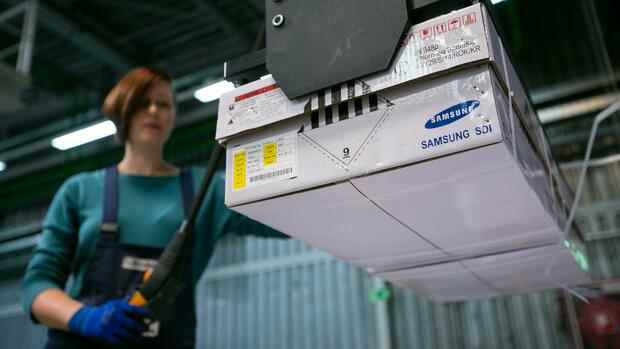Berlin, Zurich Gas, coal and oil prices have rallied like never before. Due to the efforts for more climate protection, some high energy prices are likely to become permanent. But this will not just be limited to the energy sector.
Metals, which are needed for the green transformation, are also likely to see drastic price increases. This is the result of a study by the German Institute for Economic Research (DIW), which is available to the Handelsblatt.
If the world economy wants to be free of CO2 emissions by 2050, price increases will occur in the next few years. According to the scenario, cobalt prices could increase by up to 500 percent in 2030 compared to 2020. A ton of the metal would then cost $217,000.
The increase for lithium would be up to 180 percent, for nickel it would be around 160 percent and for copper around 70 percent. Similar levels have already existed, but prices fell sharply again within one to two years, explains DIW economist Lukas Boer, who carried out the calculations. “That would not be the case here in the scenario considered.”
Top jobs of the day
Find the best jobs now and
be notified by email.
The metals are urgently needed for the energy transition, whether for wind turbines, photovoltaic systems, batteries or electric cars. An electric car contains five times the amount of these metals compared to a vehicle with a combustion engine.
Demand increases significantly
The demand for these substances is expected to be correspondingly high. So far, renewable energies, whether for production or storage, account for 20 percent of the total demand for the four important metals.
According to calculations by the International Energy Agency (IEA), on which the DIW analysis is based, the proportion of copper increases to 40 percent, cobalt and nickel to 40 to 60 percent and lithium to over 80 percent.
The problem: The supply will not be able to keep up with the increasing demand. Copper, nickel and cobalt are mined in mines. The development of new mines can take 20 years.
Lithium is usually produced from so-called brines. While the lead time for brine mining is faster, it is still a few years. “It will be almost impossible for supply to meet demand,” says Daniel Briesemann, Commerzbank commodities analyst.
DIW researcher Boer has also calculated what will happen to metal prices if decision-makers around the world do not agree on the plan to be emission-free by 2050 and everyone simply continues to pursue their current policies. Result: The price level for copper, nickel, cobalt and lithium would remain at about the 2020 level.
>> Read here: “The car will be part of the energy system in the future” – This is how e-cars should relieve the power grids
The price increase would not only affect companies. Rather, Boer expects the metals to “significantly affect inflation, international trade and economic output.” Producers will often pass the increased costs on to their customers.
In addition, new dependencies could arise. The Democratic Republic of the Congo produces about 70 percent of the world’s annual production of cobalt. Chile has the largest reserves of copper and lithium.
Australia is the largest lithium producer. Indonesia produces the most nickel. A whole new power would come to the states, at the same time the pressure on them would increase considerably.
Global climate policy necessary
According to the DIW, in order to limit the negative effects, uncertainties about the political course would have to be eliminated, because otherwise investments in metal production would be held back.
A globally coordinated climate policy is therefore crucial. At the same time, damage caused by the expansion of mining must be prevented through environmental and social standards.
Boer’s calculations have some uncertainties because they go so far into the future. But the trend is clear, as can already be seen today. For the first time in years, the analysis company S&P Global Platts observed rising prices for batteries for electric cars at the end of December 2021. Experts also expect higher costs for batteries in 2022.
The reason is already rapidly increasing prices for lithium, cobalt, nickel and copper. The price of lithium carbonate alone, an important preliminary product for battery cells, has risen by 300 percent in Europe within six months. At over $40,000 a ton, lithium is the most expensive in the S&P Global data series.
Commodity markets are already anticipating a significant shift in demand from crude oil to battery metals. Credit Suisse recently forecast “margins at unprecedented levels” for lithium producers in the face of tight markets.
In the shadow of lithium, cobalt and nickel have also recently become significantly more expensive, by 37 and 15 percent respectively. Copper is also trading at a historically high level of around $9,800 per ton. It will probably not be the end of the price rallies.
More: Three reasons why inflation could remain higher than everyone thinks
